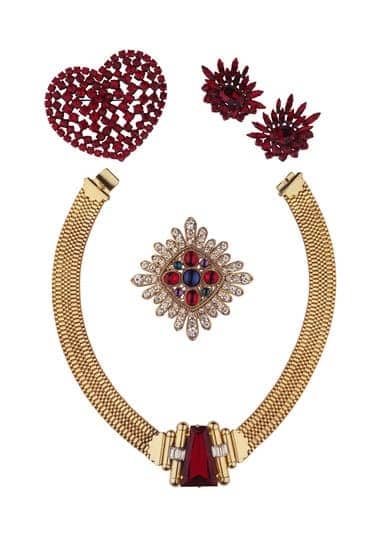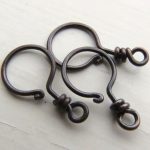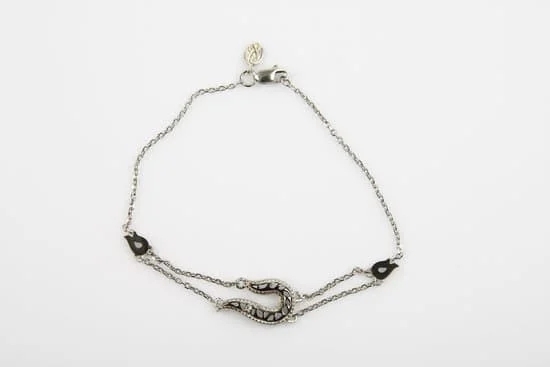Jewelry making enthusiasts often turn to beading wire to create stunning and intricate designs. Beading wire is a versatile and essential material in the world of jewelry crafting, allowing for endless possibilities in design and creativity. Whether you are a beginner or an experienced jewelry maker, understanding the basics of working with beading wire is crucial for successful projects.
When it comes to jewelry making, beading wire comes in various materials and thicknesses, each serving a different purpose in the design process. From stainless steel to nylon-coated wires, the options are vast, catering to different needs and preferences. In this article, we will explore the types of beading wires available and how they can impact your jewelry designs.
To start your journey into jewelry making with beading wire, it is important to have the right tools at your disposal. Essential items such as wire cutters, crimping pliers, and clasps are necessary for manipulating and securing the wire in place. With these tools in hand, you can follow our step-by-step guide on creating simple yet elegant wire jewelry designs that will elevate your accessory game.
Types of Beading Wires
When it comes to creating beautiful jewelry pieces using beading wire, understanding the types of materials and thickness available is essential. There are various options to choose from, each with its unique characteristics that can affect the overall look and feel of your design.
One of the most common materials used for beading wire is stainless steel, known for its durability and strength. This type of wire is ideal for creating sturdy pieces that will last a long time without losing their shape.
Another popular material for beading wire is copper, which offers a more flexible option compared to stainless steel. Copper wire is easy to manipulate and shape, making it perfect for intricate designs that require bending and twisting. Additionally, copper has a warm tone that adds a touch of elegance to jewelry pieces.
For those looking for a more affordable option, aluminum wire is a great choice. It is lightweight and comes in a variety of colors, allowing for endless creative possibilities.
In terms of thickness, beading wires are available in different gauges ranging from 10 to 34 gauge, with lower numbers representing thicker wires. Thicker wires are suitable for supporting heavier beads or creating bold statement pieces, while thinner wires are perfect for delicate designs or weaving intricate patterns.
When selecting the right wire thickness for your project, consider the size and weight of your beads as well as the desired look you want to achieve. By understanding the various materials and thickness options available, you can choose the perfect beading wire to bring your jewelry designs to life.
| Wire Material | Characteristics |
|---|---|
| Stainless Steel | Durable and strong, ideal for sturdy designs |
| Copper | Flexible and easy to manipulate, adds an elegant touch |
| Aluminum | Affordable and lightweight with various color options |
Essential Tools for Working With Beading Wire
When it comes to creating beautiful jewelry with beading wire, having the right tools is essential for achieving professional-looking results. Some of the basic tools you will need for working with beading wire include round-nose pliers, chain-nose pliers, wire cutters, crimping pliers, and bead reamers.
Round-nose pliers are perfect for making loops in the wire while chain-nose pliers are ideal for bending and gripping the wire. Wire cutters are necessary for cutting the beading wire to your desired length, while crimping pliers help secure clasps and beads in place. Bead reamers come in handy for enlarging holes in beads that may be too small for the wire thickness you are using.
Having these tools in your jewelry-making kit will make working with beading wire much easier and more efficient. They not only help achieve precise bends and loops but also ensure a professional finish to your creations. Investing in good quality tools can make a significant difference in the outcome of your jewelry pieces.
| Basic Tools | Function |
|---|---|
| Round-nose Pliers | Making loops in the wire |
| Chain-nose Pliers | Bending and gripping the wire |
| Wire Cutters | Cutting the beading wire |
| Crimping Pliers | Securing clasps and beads |
Step-by-Step Guide to Creating Simple Wire Jewelry Designs
When it comes to creating simple wire jewelry designs, having the right tools and materials is essential. Here is a step-by-step guide to help you get started on your own beading wire jewelry projects:
- Choose your preferred beading wire material, such as sterling silver, gold-filled, or copper wire.
- Select the appropriate thickness of the beading wire based on the size and weight of the beads you will be using.
- Gather your essential tools, including round nose pliers, chain nose pliers, wire cutters, and a ruler for measuring.
Once you have all your materials and tools ready, follow these steps to create a simple wire jewelry design:
- Measure and cut a piece of beading wire to your desired length using wire cutters.
- Slide beads onto the beading wire in your desired pattern or design.
- To create loops for connecting components or adding clasps, use round nose pliers to grip the end of the wire and form a loop.
Creating simple wire jewelry designs is a great way to showcase your creativity and style. With practice, you can experiment with different bead combinations, patterns, and techniques to create unique pieces that reflect your individual taste. Remember to have fun with the process and let your imagination guide you as you explore the world of beading wire jewelry making.
Tips for Choosing the Right Beading Wire for Your Project
When it comes to creating beautiful jewelry pieces with beading wire, choosing the right type of wire is crucial to the success of your project. There are various factors to consider when selecting the appropriate beading wire, such as the type of beads you are using, the overall design of your piece, and the durability required for the finished product.
Materials and Thickness
Different types of beading wires are available on the market, each with its unique characteristics and uses. Some common materials used for beading wire include stainless steel, copper, sterling silver, and nylon-coated stainless steel.
The thickness of the wire is also a critical factor to consider, as it can impact the strength and flexibility of your jewelry design. Thicker wires provide more structural support for heavier beads or intricate designs, while thinner wires are better suited for delicate projects or designs that require more flexibility.
Flexibility and Strength
When selecting a beading wire for your project, it is essential to consider both flexibility and strength. Some projects may require a more rigid wire to maintain shape or hold heavier beads in place, while other projects may benefit from a more flexible wire that allows for fluid movement in the design.
Be sure to test different types of beading wires with your specific project requirements in mind to ensure you choose a wire that meets both strength and flexibility needs.
Color and Finish
In addition to materials and thickness, consider the color and finish of the beading wire when choosing the right option for your project. Beading wires come in various colors and finishes to complement or enhance your overall design aesthetic.
Whether you want a metallic shine, matte finish, or colored coating on your wire, selecting a wire that complements your beads and design vision will help achieve a cohesive look in your finished piece. Take time to explore different options and experiment with various combinations before committing to a particular beading wire for your jewelry project.
Advanced Techniques in Wire Wrapping and Beading
Wire Wrapping
One of the advanced techniques in jewelry making with beading wire is wire wrapping. This technique involves using a pliable wire to securely wrap beads, stones, or other elements in intricate designs. Wire wrapping allows for more creativity and customization in your jewelry pieces, as you can create unique patterns and shapes with the wire. To master wire wrapping, it is essential to practice different wrapping styles and techniques to achieve the desired look.
Wire Coiling
Another advanced technique that adds flair to your beaded jewelry designs is wire coiling. This method involves twisting or coiling the beading wire around itself or another base to create decorative coils. Wire coiling can be used to enhance the design, add texture, or even serve as a focal point in your jewelry piece. Experiment with different gauges of wire and coil sizes to achieve various effects, such as tight spirals or loose waves.
Incorporating Gemstones
To elevate your wire-wrapped and beaded jewelry designs, consider incorporating gemstones into your pieces. Gemstones add color, sparkle, and a touch of elegance to your creations. Whether you choose faceted beads for added brilliance or cabochons for a smooth finish, gemstones can take your jewelry-making skills to the next level. Be mindful of how you secure the gemstones onto the beading wire to ensure they are securely attached and will not come loose over time.
By mastering these advanced techniques in wire wrapping and beading, you can create stunning and unique jewelry pieces that showcase your creativity and skill. Experiment with different wire gauges, bead sizes, and gemstone choices to discover new design possibilities and push the boundaries of traditional jewelry making. With practice and patience, you can develop your own signature style in working with beading wires and create one-of-a-kind pieces that stand out in any collection.
Inspiration Gallery
Creating stunning jewelry designs with beading wire opens up a world of possibilities for creativity and personal expression. Whether you are a beginner or an experienced crafter, there are endless ways to incorporate beading wire into your jewelry making projects. To help inspire your next creation, here are some stunning beading wire jewelry designs:
- Wire-Wrapped Gemstone Necklace: Elevate a simple gemstone pendant by wrapping it in intricately coiled beading wire. The contrast between the smooth stone and the textured wire adds dimension and visual interest.
- Swarovski Crystal Statement Earrings: Make a bold statement with dazzling Swarovski crystals suspended from delicate beading wire. The shimmer and shine of the crystals paired with the flexibility of the wire create a dynamic and eye-catching look.
- Layered Wire Bracelets: Play with different colors and thicknesses of beading wire to create layered bracelets that can be stacked for a trendy bohemian look. Add beads or charms for extra flair and personalization.
The key to creating stunning beading wire jewelry designs is to experiment with different techniques, materials, and colors. Don’t be afraid to think outside the box and mix traditional styles with modern elements. Whether you prefer minimalist designs or intricate patterns, there is no limit to what you can achieve with beading wire in your jewelry making projects.
Incorporating beads, crystals, gemstones, or even pearls into your designs can add texture, color, and depth to your creations. By combining these elements with the flexibility and strength of beading wire, you can create one-of-a-kind pieces that reflect your unique style and personality.
Take inspiration from nature, geometric shapes, or cultural motifs to infuse meaning and symbolism into your jewelry designs. Let your imagination run wild as you explore the endless possibilities of working with beading wire in your jewelry making journey.
Troubleshooting Common Issues When Working With Beading Wire
Working with beading wire in jewelry making can sometimes present challenges that may disrupt your creative process or affect the final outcome of your design. Understanding common issues that may arise and how to troubleshoot them can help you overcome any obstacles in your project. One of the most frequent problems encountered when working with beading wire is kinking.
This occurs when the wire bends sharply, causing it to form a permanent curve or dent. To prevent kinking, make sure to handle the wire gently and avoid sharp bends.
Another issue that may arise is tangling or twisting of the beading wire. This can happen when you are trying to string beads onto the wire, leading to frustration and inefficiency in your work. To avoid tangling, try using a bead stopper or tape at the end of the wire to keep the beads in place while you work. Additionally, make sure to straighten out any twists in the wire before continuing with your design.
In some cases, you may find that your beading wire is too thin or too thick for the project you are working on, resulting in instability or difficulty in manipulating the wire. It is essential to choose the right thickness of beading wire based on the weight and size of your beads, as well as the overall design of your jewelry piece.
Experimenting with different types of beading wires will help you determine which one works best for each specific project. By addressing these common issues and learning how to troubleshoot them effectively, you can enhance your jewelry making experience and create stunning designs with ease.
Conclusion and Final Thoughts on Jewelry Making With Beading Wire
Jewelry making with beading wire offers limitless creative possibilities for individuals who enjoy crafting their own unique pieces. The versatility of beading wire allows jewelry makers to experiment with different techniques and designs, resulting in stunning creations that showcase their talents and personal style. By learning about the various types of beading wires available, understanding the essential tools needed, and mastering both simple and advanced techniques, anyone can become proficient in working with beading wire to create beautiful jewelry pieces.
When choosing the right beading wire for a project, it is important to consider factors such as the material and thickness of the wire, as well as the intended design of the piece. Different types of beading wires offer varying levels of flexibility, strength, and color options, allowing jewelry makers to customize their creations according to their preferences.
Whether creating delicate earrings or statement necklaces, selecting the appropriate beading wire is crucial to ensuring that the finished piece is both aesthetically pleasing and durable.
In conclusion, jewelry making with beading wire is a rewarding craft that allows individuals to express their creativity and artistic vision through handmade pieces. By following a step-by-step guide, exploring advanced techniques in wire wrapping and beading, finding inspiration from stunning designs, and troubleshooting common issues along the way, aspiring jewelry makers can develop their skills and create truly unique accessories.
With practice and dedication, anyone can master the art of working with beading wire to craft beautiful jewelry that reflects their individuality and passion for handcrafted treasures.
Frequently Asked Questions
What Is the Difference Between Beading Wire and Jewelry Wire?
Beading wire and jewelry wire are both essential materials in creating handmade jewelry, but they serve different purposes. Beading wire is typically made of multiple strands of fine steel wires twisted together and coated with nylon for flexibility and durability.
On the other hand, jewelry wire is a single strand of metal, like copper or silver, which can be used for wire-wrapping, making findings, or creating intricate designs.
What Is the Best Wire for Jewelry Beads?
When it comes to choosing the best wire for jewelry beads, it often depends on the type of beads being used and the desired design of the piece. For heavier beads or those with sharp edges, a thicker gauge wire like 20 or 22 gauge might be more suitable to provide enough support.
However, for delicate beads or projects that require more flexibility and daintiness, a thinner gauge wire like 26 or 28 gauge would be a better choice.
What Is the Best Wire for Jewelry Making Beginners?
For beginners in jewelry making, it is generally recommended to start with soft and easy-to-manipulate wires such as copper or craft wire. These types of wire are more forgiving in terms of mistakes and allow beginners to practice basic techniques like forming loops, wrapping beads, and creating simple designs without too much difficulty.
As beginners gain more experience and confidence in their skills, they can then explore working with different types of wires like sterling silver or gold-filled wires for more advanced projects.

Welcome to my jewelry blog! My name is Sarah and I am the owner of this blog.
I love making jewelry and sharing my creations with others.
So whether you’re someone who loves wearing jewelry yourself or simply enjoys learning about it, be sure to check out my blog for insightful posts on everything related to this exciting topic!





